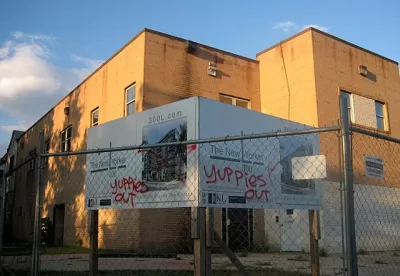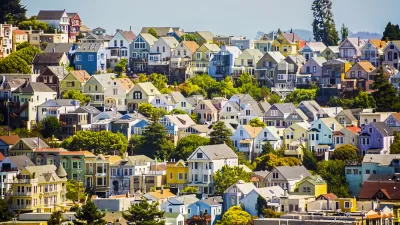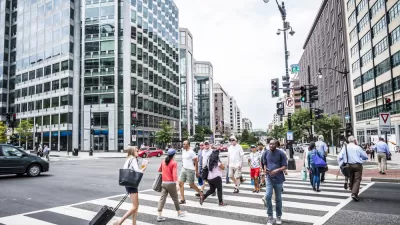Florida discusses a recent study that emphasizes how new the back-to-the-city movement is, how white it is, and what that means for the people it pushes out.

By now it's obvious even to those outside the urbanist community that America's cities are roaring back. Richard Florida writes, "A new study by my University of Toronto colleague Nathaniel Baum-Snow and Daniel Hartley of the Federal Reserve of Chicago takes the deepest dive into this issue yet, tracing the back-to-the-city movement across U.S. cities and metros."
For one thing, the study finds that the current urban renaissance only really began around 2000. "In fact, during [the time between 1980 and 2000], both affluent and less affluent residents continued to leave cities, including educated and working class whites. This dynamic only began to change sharply after 2000, when Americans began flowing back to urban centers."
This is a win-win for the well-off white people who make up the bulk of those moving back. "Re-urbanization has enabled affluent whites to simultaneously reduce their commutes, locate in closer proximity to higher paying economic opportunities, and to have privileged access to the amenities that come along with urban living."
Florida emphasizes that central areas, at least, still don't match suburbs after decades of white flight. "Still, even with this back-to-the-city incursion of the educated and affluent, urban neighborhoods remain less affluent and less white than the suburbs."
On displacement, he writes, "This outflow of the less affluent is especially troubling because urban centers offer both better job opportunities and greater levels of the kinds of amenities that can help boost their wages and increase their prospects of economic mobility." In other words, the "outer cities" of the future might be even worse off than the inner cities of decades past.
FULL STORY: The Downsides of the Back-to-the-City Movement

Planetizen Federal Action Tracker
A weekly monitor of how Trump’s orders and actions are impacting planners and planning in America.

Maui's Vacation Rental Debate Turns Ugly
Verbal attacks, misinformation campaigns and fistfights plague a high-stakes debate to convert thousands of vacation rentals into long-term housing.

Restaurant Patios Were a Pandemic Win — Why Were They so Hard to Keep?
Social distancing requirements and changes in travel patterns prompted cities to pilot new uses for street and sidewalk space. Then it got complicated.

In California Battle of Housing vs. Environment, Housing Just Won
A new state law significantly limits the power of CEQA, an environmental review law that served as a powerful tool for blocking new development.

Boulder Eliminates Parking Minimums Citywide
Officials estimate the cost of building a single underground parking space at up to $100,000.

Orange County, Florida Adopts Largest US “Sprawl Repair” Code
The ‘Orange Code’ seeks to rectify decades of sprawl-inducing, car-oriented development.
Urban Design for Planners 1: Software Tools
This six-course series explores essential urban design concepts using open source software and equips planners with the tools they need to participate fully in the urban design process.
Planning for Universal Design
Learn the tools for implementing Universal Design in planning regulations.
Heyer Gruel & Associates PA
JM Goldson LLC
Custer County Colorado
City of Camden Redevelopment Agency
City of Astoria
Transportation Research & Education Center (TREC) at Portland State University
Jefferson Parish Government
Camden Redevelopment Agency
City of Claremont





























